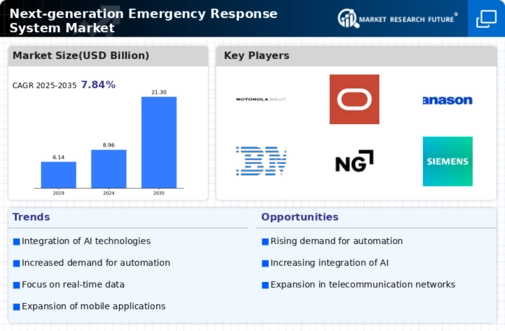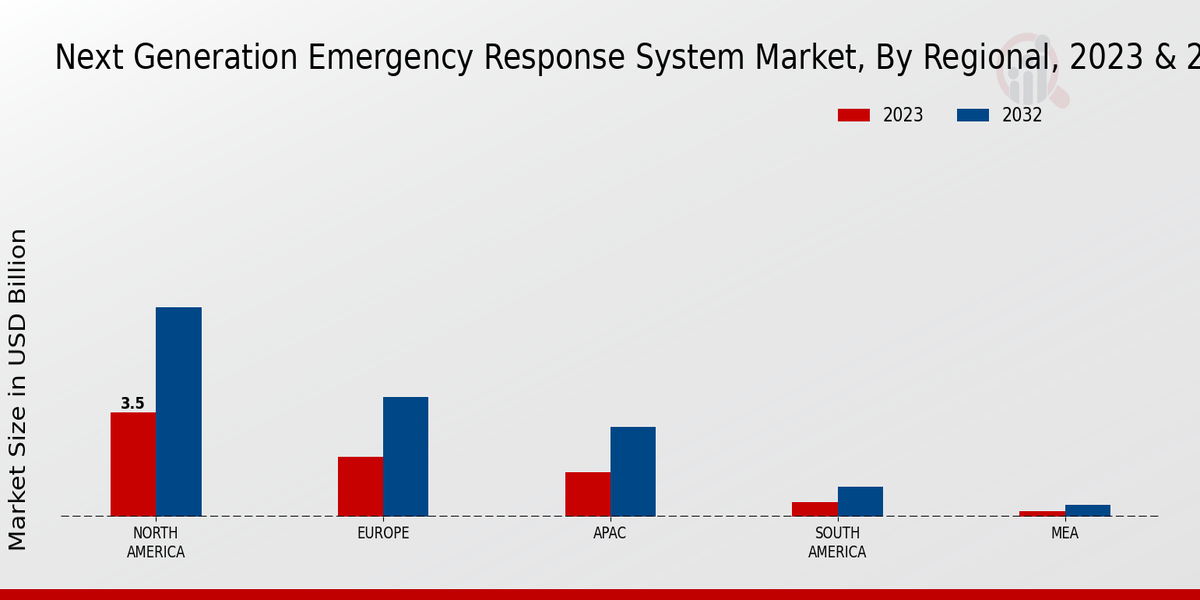Increased Urbanization
Urbanization significantly influences the Global Next-generation Emergency Response System Market Industry. As populations concentrate in urban areas, the complexity of emergency situations escalates. This necessitates advanced response systems capable of managing diverse challenges, from natural disasters to public safety threats. Cities are investing in smart technologies to enhance their emergency response frameworks. For example, urban centers are deploying integrated systems that utilize real-time data to coordinate responses effectively. This trend is expected to contribute to market growth, with projections indicating a rise to 21.3 USD Billion by 2035.
Rising Public Awareness
Public awareness regarding emergency preparedness is on the rise, significantly impacting the Global Next-generation Emergency Response System Market Industry. As communities become more informed about potential risks, there is a growing demand for efficient response systems. Educational campaigns and training programs are increasingly common, fostering a culture of preparedness. This heightened awareness drives investments in advanced technologies and systems that can respond effectively to emergencies. Consequently, the market is expected to experience robust growth, aligning with the overall trend of increasing public engagement in safety measures.
Market Growth Projections
The Global Next-generation Emergency Response System Market Industry is poised for substantial growth, with projections indicating a rise from 8.96 USD Billion in 2024 to 21.3 USD Billion by 2035. This growth trajectory reflects a compound annual growth rate (CAGR) of 8.2% from 2025 to 2035. Such figures underscore the increasing investment in advanced emergency response technologies and systems. The market's expansion is driven by various factors, including technological advancements, urbanization, and government initiatives aimed at enhancing public safety and preparedness.
Technological Advancements
The Global Next-generation Emergency Response System Market Industry is propelled by rapid technological advancements in communication and data analytics. Innovations such as artificial intelligence and machine learning enhance situational awareness and response times. For instance, AI-driven algorithms can predict emergency scenarios, allowing for preemptive measures. The integration of drones and IoT devices facilitates real-time data collection, which is crucial during emergencies. As a result, the market is projected to reach 8.96 USD Billion in 2024, reflecting a growing reliance on technology to improve emergency response capabilities.
Government Initiatives and Funding
Government initiatives play a crucial role in shaping the Global Next-generation Emergency Response System Market Industry. Many governments are prioritizing funding for emergency response systems to enhance public safety and disaster preparedness. Initiatives often include grants and subsidies aimed at integrating advanced technologies into existing frameworks. For instance, various countries are establishing public-private partnerships to develop innovative solutions. This increased financial support is likely to stimulate market growth, as evidenced by the projected CAGR of 8.2% from 2025 to 2035, indicating a sustained commitment to improving emergency response capabilities.
Integration of Multi-Agency Collaboration
The integration of multi-agency collaboration is transforming the Global Next-generation Emergency Response System Market Industry. Effective emergency response often requires coordination among various agencies, including police, fire, and medical services. Advanced systems that facilitate seamless communication and data sharing among these entities are becoming essential. For example, integrated platforms allow for real-time updates and resource allocation, enhancing overall response efficiency. This collaborative approach is likely to drive market growth, as agencies recognize the benefits of unified systems in managing complex emergencies.






















Leave a Comment